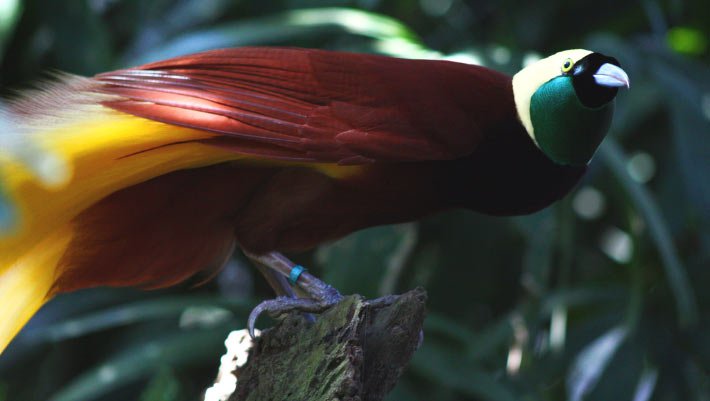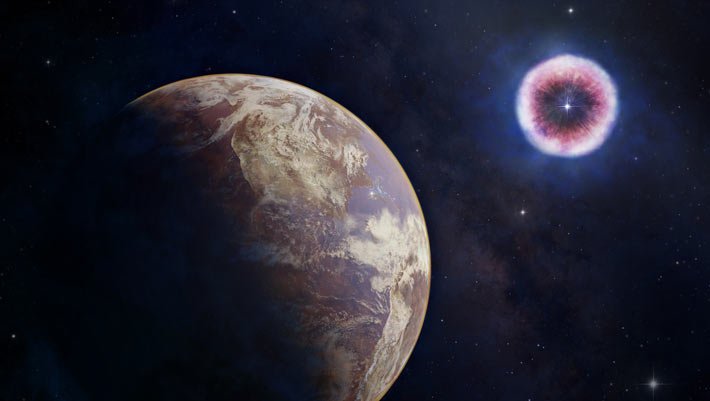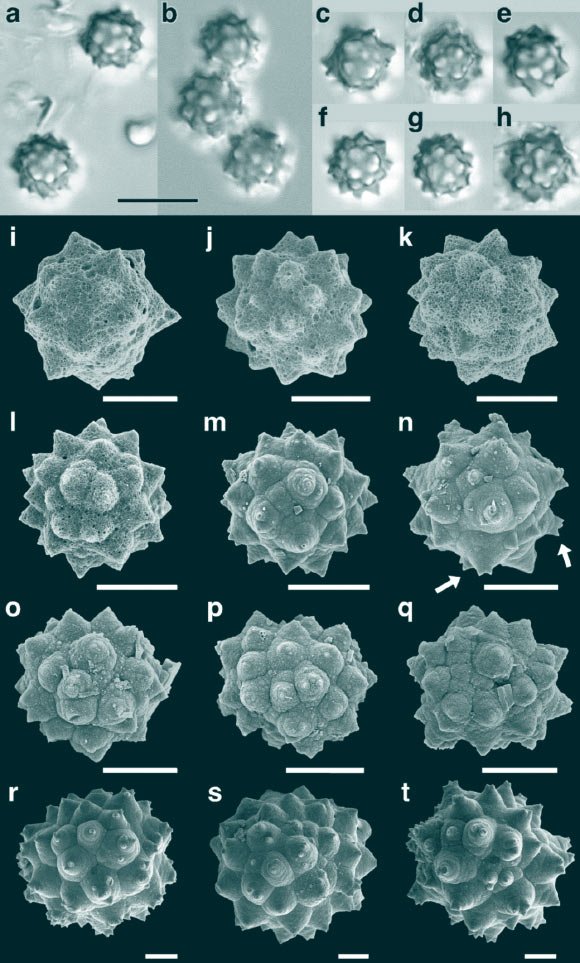Birds-of-paradise are a family of small to medium-sized forest birds found in the New Guinea region. With their elaborate and colorful feathers, these birds are among the most beautiful creatures on Earth. In a new study, ornithologists from the American Museum of Natural History and the University of Nebraska-Lincoln found 37 of the 45 currently recognized species of birds-of-paradise are biofluorescent. They suggest that this special ‘glow’ is important among male birds-of-paradise for hierarchy and mating displays.

The greater bird-of-paradise (Paradisaea apoda). Image credit: Andrea Lawardi.
Birds-of-paradise, with their colorful feathers as well as complex courtship displays, have a special place in natural history.
They serve as a school-book example of sexual selection, which is the outcome of generations of female mate choice of males that have attractive features.
The result is an unparalleled radiation of species where males exhibit extreme morphological features and behaviors with no other evolutionary meaning than to attract females for mating.
“The unique mating rituals and displays of birds-of-paradise have fascinated scientists and spurred a myriad of studies focused on trait evolution and sexual selection,” said University of Nebraska-Lincoln’s Dr. Rene Martin.
“It seems fitting that these flashy birds are likely signaling to each other in additional, flashy ways.”
Biofluorescence is a phenomenon that occurs when an organism absorbs light, transforms it, and emits it as a different color.
“Despite there being over 10,000 described avian species, with numerous studies that have documented their bright plumage, elaborate mating displays, and excellent vision, surprisingly very few have investigated the presence of biofluorescence,” said American Museum of Natural History curator John Sparks.
“Bowerbirds and fairy wrens failed to glow, but among birds-of-paradise, we found bright green-yellow fluorescence.”

Biofluorescence is seen on an emperor bird-of-paradise (Paradisaea guilielmi). Image credit: Rene Martin.
The researchers took a closer look at biofluorescence in birds-of-paradise, finding that the birds also fluoresce when exposed to UV light, not just blue light.
This phenomenon is especially prominent in males, focused on their bright plumage and skin in areas that are highlighted during displays: the inner mouth and bill, feet, and feathers on the head, neck, and belly.
In females, biofluorescence is usually restricted to plumage on the chest and belly.
“These birds live near the equator, where there is an abundance of bright solar light year-round, and they live in forests where the complexity of light is significantly affected by differences in the canopy and where biofluorescent signals may be enhanced,” said Emily Carr, a Ph.D. student at the American Museum of Natural History.
“Studies based on closely related species found that the pigments in the birds’ eyes align with the fluorescence peaks that the researchers measured.”
“Based on this, we infer that birds-of-paradise can see these biofluorescent patterns, which enhance contrast against dark plumage and possibly play an important role in courtship and hierarchy.”
The study will be published in the journal Royal Society Open Science.
_____
Rene Martin et al. Royal Society Open Science, in press; doi: 10.1098/rsos.241905











